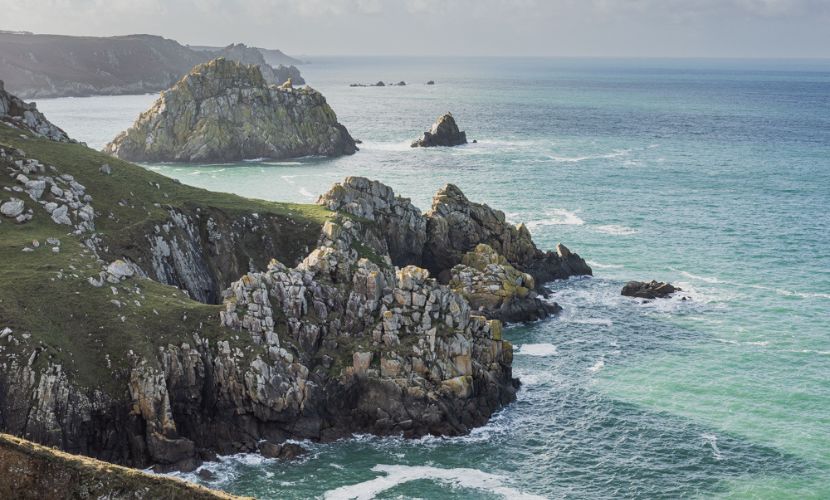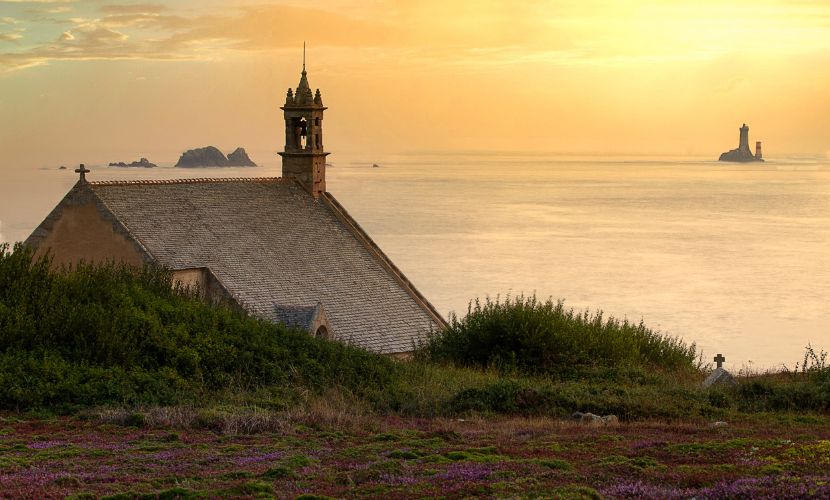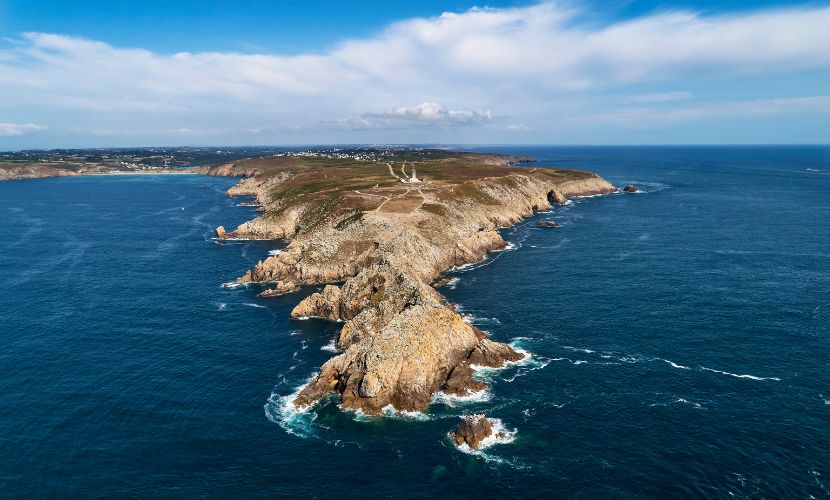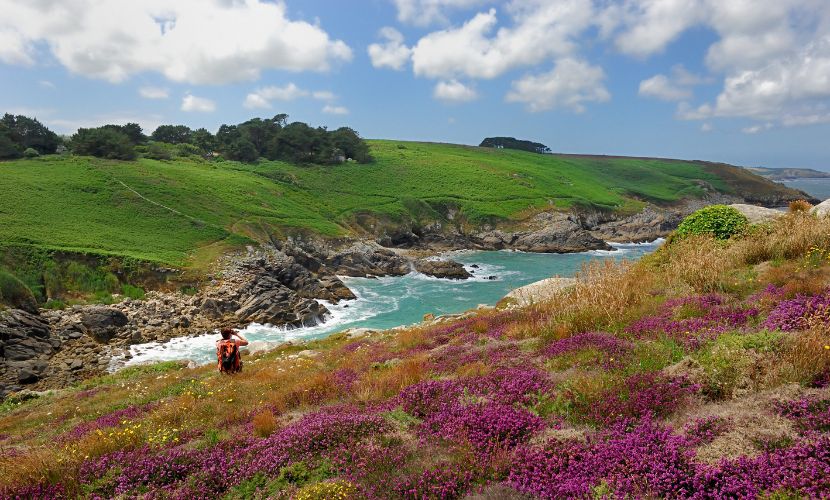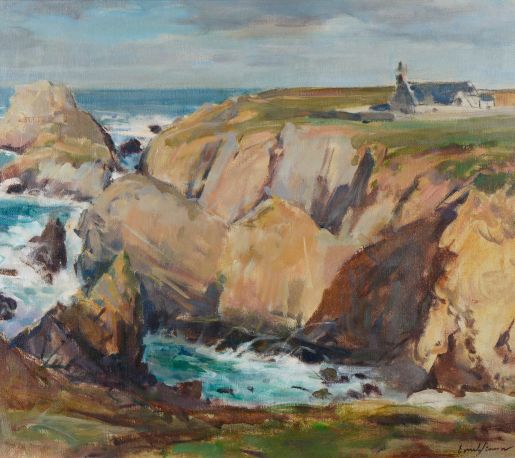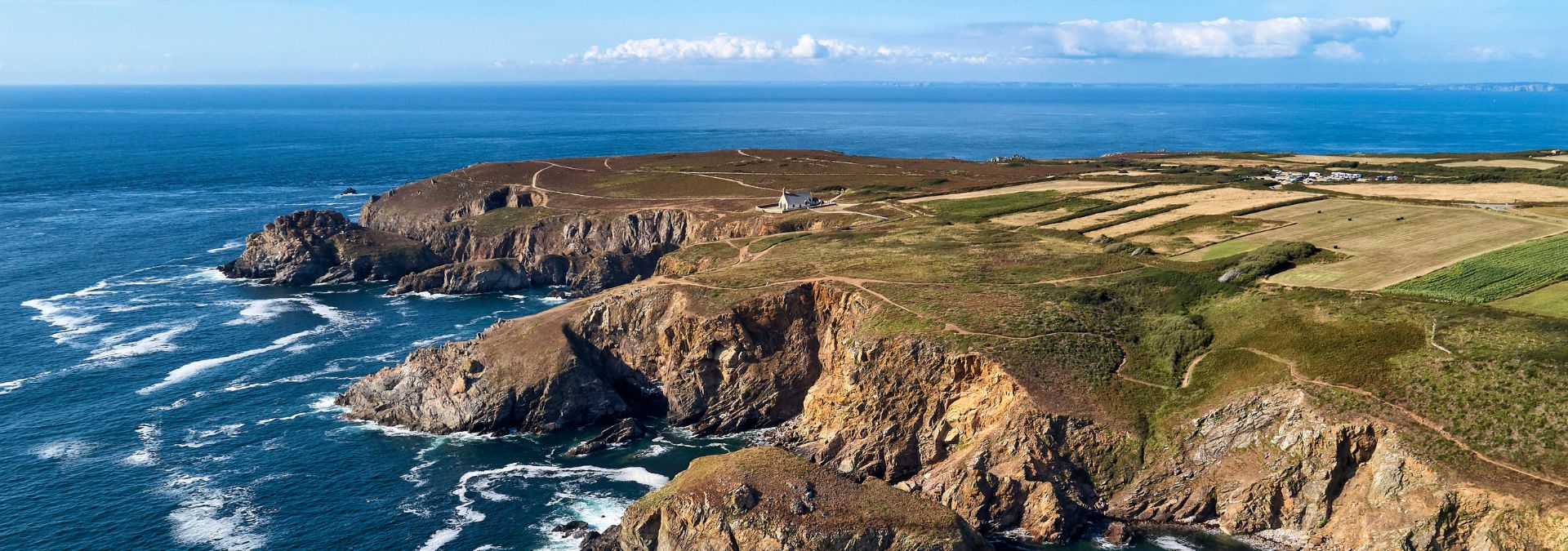
An exceptional natural site
The Pointe du Raz coastal point in the Cap Sizun offers a truly breathtaking view of the ocean, highlighted by the iconic Vieille and Tévennec lighthouses and the Ile de Sein lying close to the horizon. These panoramic views link up with other recognisable promontories along the Finistère coast: to the far north is the Pointe de Saint-Mathieu in the Pays d’Iroise, then a little closer is the Pointe de Pen Hir and Cap de la Chèvre in the Crozon Peninsula; to the south lies Audierne Bay, which is bracketed at the far end by Eckmühl lighthouse in Penmarc’h. Coastal points, bays, cliffs, coves and then green farmland: from the Pointe du Raz, observe a microcosm where nature reigns supreme.
A fascinating place
At certain times of year, the Pointe du Raz is a backdrop for the raging elements, embodying the overwhelming power of nature. During winter storms, it offers a thrilling adrenaline rush as gusts of wind can exceed 110 mph over the Raz de Sein waters, heightened by crashing waves and rushing currents. Perched on the heights of the Pointe du Van, you’ll see the particular outline of Saint-They Chapel, bravely facing the onslaught of the ocean. Clinging to the cliff, it stands guard over the Raz de Sein waters and seems to watch over passing sailors. Nearby, the Pointe du Millier lighthouse adds a touch of magic to this spectacular setting. The atmosphere is reminiscent of the Arrée Mountains, where Montagne Saint Michel and its chapel on the 380-metre summit are often shrouded in a mysterious veil of mist.
Geography shaped by geology
The granite-rich soil, over 300 million years old, reveals the fascinating history that has shaped the area: spectacular geological deformations have given rise to a series of faults stretching from the cliffs of the Pointe du Van all the way to Nantes, so that the site looks like a jagged ridge accentuated by marine erosion, similar to the Primel cliffs at Plougasnou in northern Finistère. One of UNESCO’s ‘Armorique Geopark’ sites, the Crozon Peninsula is similarly marked by steep cliffs, sheltered coves and landscapes sculpted by erosion. The Crozon Peninsula is now actively working to preserve its natural heritage with the aim of obtaining the ‘Grand Site de France’ label, following the example of the Pointe du Raz.
The contrast between cliffs and countryside
Right at the tip of western Brittany, the Cap Sizun has sharply contrasting landscapes, ranging from high, jagged cliffs to peaceful countryside views scattered with charming villages and hamlets. This rural landscape is dotted with communities that have preserved their traditional architectural heritage, particularly in Saint-Tugen, Lescoff, Primelin and Cléden-Cap-Sizun. This more intimate inland area is marked by a network of sunken lanes and dry stone walls, the region’s everyday heritage that was built using techniques handed down through generations, humble yet resilient walls built to protect crops, animals and homes from the wind and sea spray. These dry-stone walls tell a fascinating story, particularly those built at the top of the cliffs to hold back the earth and make it easier for the seaweed to rise. These traditional walls are also inextricably linked with the landscapes of the Ile de Sein.
Unspoilt nature
A genuine reserve of biodiversity, the Pointe du Raz tops the list of Finistère’s wealth of natural sites – in fact, over half of Finistère’s inhabitants live within 4 km of an exceptional natural site. These range from the Cragou moors and Névet woods, the Tréffiagat and Tréompan dunes in Ploudalmézeau, to the Langazel wetlands in Trémaouézan and Mougau wetlands in Commana, the estuaries of the Aulne and Aven and the mysterious coastal inlets of the Abers. The Pointe du Raz is the perfect embodiment of this wild and unspoilt nature: both the Cap Sizun Reserve and Laoual Lake, extending extends into the Baie des Trépassés, offer excellent observation sites for understanding the diversity of local flora and fauna. While respecting their fragility, these sites can be explored all year round: visit once and you’re sure to be captivated.
A grandiose scene
The ever-changing atmosphere of Pointe du Raz and the surrounding area has always been a source of inspiration. When talking about the ocean, the locals often use the Breton word ‘glaz’, referring to a blue-green shade that only occurs in nature. Here at Land’s End, the scenery and light are reinvented at every moment, so it’s no surprise that the area has attracted painters such as Emile Simon, Maxime Maufra, Georges Clairin and Eugène Boudin, as well as writers including Victor Hugo, Gustave Flaubert and Georges Perros. Here, the variety of landscapes and colours, combined with the light and soul of the place, continue to attract and inspire artists and photographers today.
Œuvre d’Emile Simon, Pointe du Van, Chapelle Saint-They – Legs Fié-Fieux. Manoir de Squividan – Département du Finistère – SQ.1998.1.698
Useful links
Contact the tourism office:
More information:

